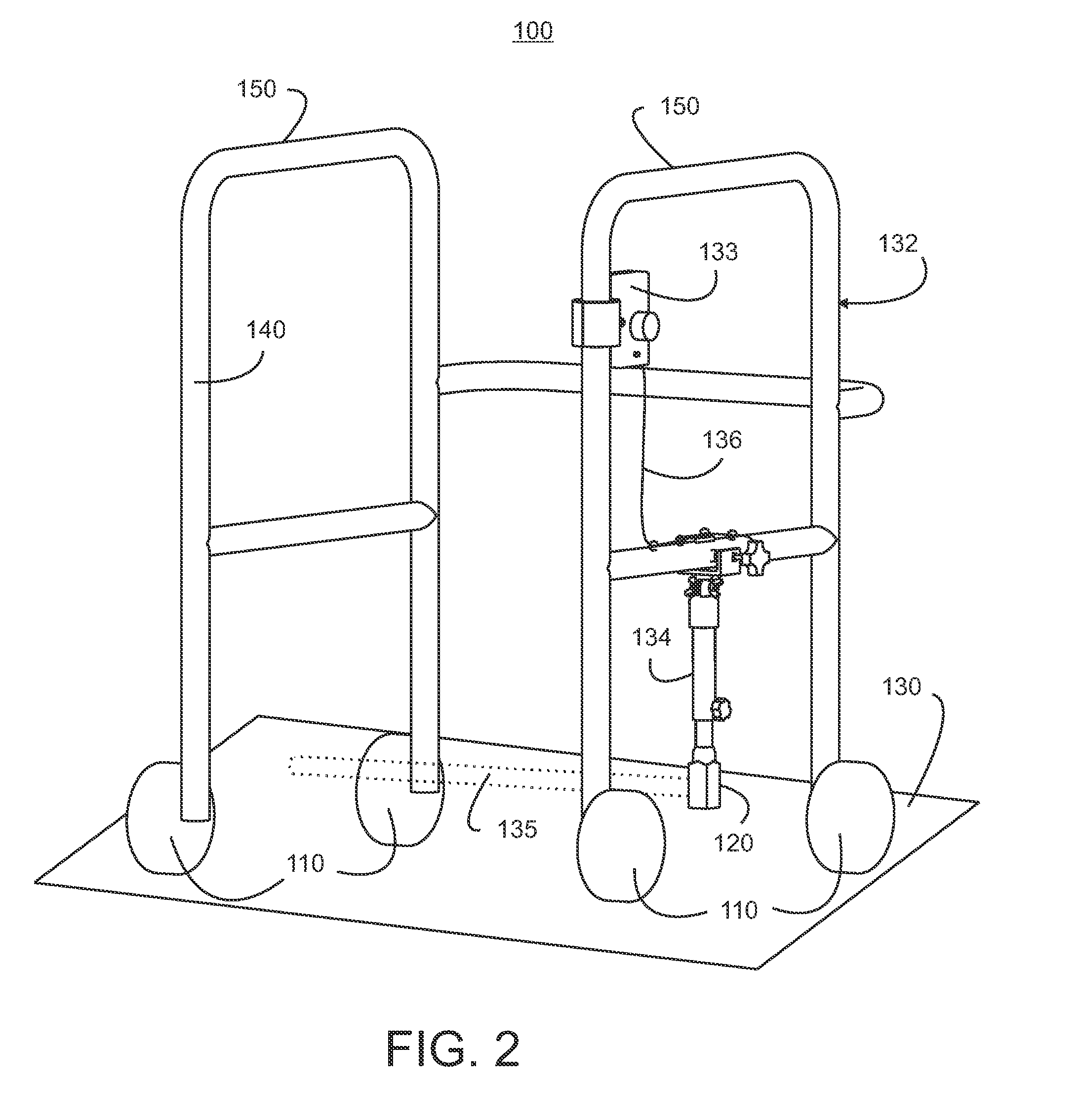Products and methods for motor performance improvement in patients with neurodegenerative disease
a neurodegenerative disease and motor performance technology, applied in the field of improving motor performance, can solve the problems of increased risk, traumatic injuries, and pd patients who have difficulty initiating gait and walking stiffly with limited arm swing, and achieve the effect of improving gait performan
- Summary
- Abstract
- Description
- Claims
- Application Information
AI Technical Summary
Benefits of technology
Problems solved by technology
Method used
Image
Examples
Embodiment Construction
[0047]The present invention is directed to a system for improving movement in a subject. The movement includes a person moving by foot across a walking surface such as a floor or the ground and encompasses any type of movement by foot including walking and running Referring initially to FIGS. 1 and 2, an exemplary embodiment of a system 100 includes an assistive walking device 132 that includes a frame 140 that extends up from a walking surface 130. The frame is configured to support the subject that is moving by foot, i.e., walking or running, across the walking surface. In one embodiment, the assistive walking device 132 is a walker, a wheeled rollator, a cane or a rolling chair. In this embodiment, the walking surface is the floor or ground across which the subject moves with the assistive walking device. Therefore, the assistive walking device moves with regard to a stationary walking surface. Alternatively, the assistive walking device is stationary and the walking surface move...
PUM
 Login to View More
Login to View More Abstract
Description
Claims
Application Information
 Login to View More
Login to View More - R&D
- Intellectual Property
- Life Sciences
- Materials
- Tech Scout
- Unparalleled Data Quality
- Higher Quality Content
- 60% Fewer Hallucinations
Browse by: Latest US Patents, China's latest patents, Technical Efficacy Thesaurus, Application Domain, Technology Topic, Popular Technical Reports.
© 2025 PatSnap. All rights reserved.Legal|Privacy policy|Modern Slavery Act Transparency Statement|Sitemap|About US| Contact US: help@patsnap.com



